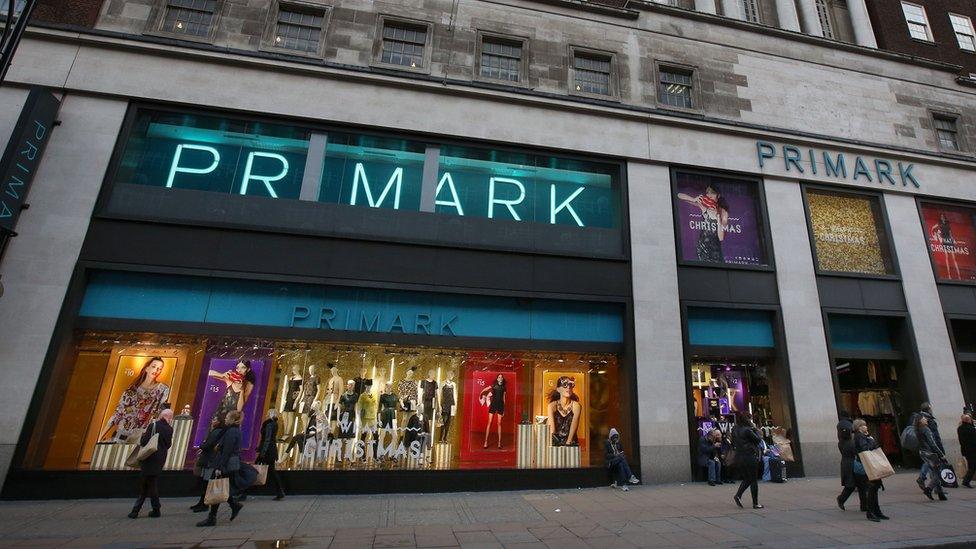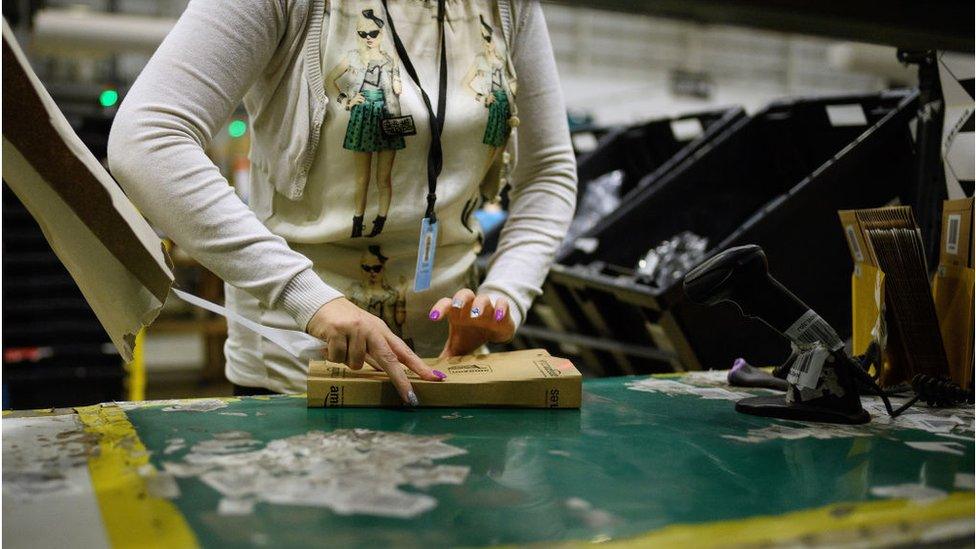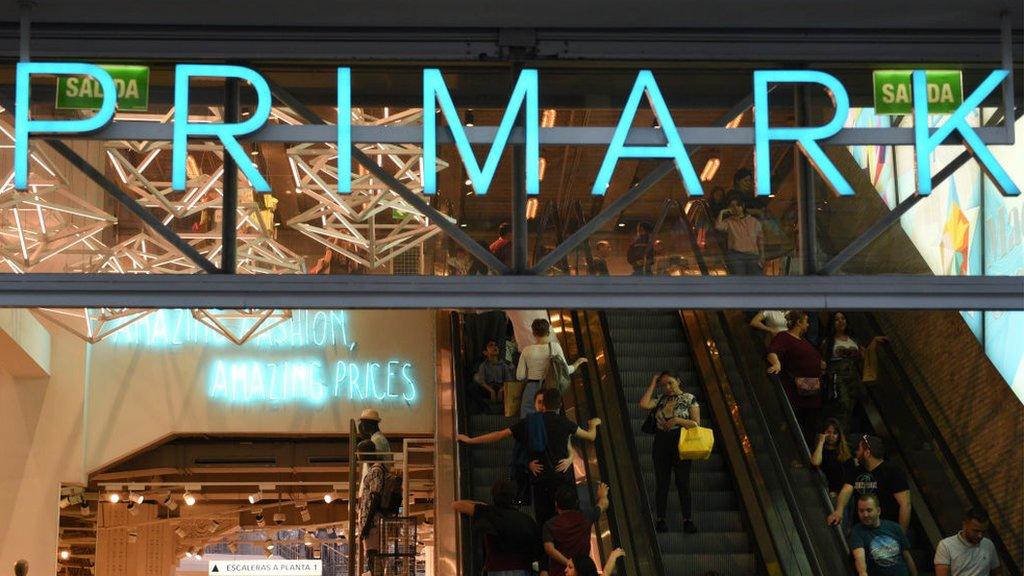Is shopping at Primark really a way to be greener?
- Published
- comments

Fast fashion has a bad reputation among environmental campaigners who accuse it of fostering a wasteful culture.
But leading chain Primark has hit back at its detractors, saying shopping on the High Street is better for the planet than buying online.
The boss of AB Foods, Primark's owner, told the Times, external that its efficient global supply chains meant it was less polluting than online delivery vans.
However, George Weston's assertions are questioned by energy experts.
Mr Weston told the newspaper: "Far from being a problem, we are a solution."
He said Primark, which does not have an online shop, had "one of the world's best supply chains".
"We don't air freight the goods, we ship them, which has far lower emissions," he added.
Mr Weston said delivery vans "puffing their way up and down a street" were more damaging than people collecting products in-store, which was "more environmentally sustainable".
He dismissed concerns that Primark was selling disposable clothes, saying his customers were not "buying them to wear just once".

The world's biggest Primark opened in Birmingham this year
So how well-founded are Primark's claims?
Researchers at the Massachusetts Institute of Technology in the US have argued that shopping online is often greener than doing it in store.
That is because when a company receives an order, it can consolidate everything in a single, bigger lorry. And this beats multiple cars driving long distances to a store or shopping centre.
The caveat, of course, is when people travel to the shops by bicycle or less-polluting public transport.
The researchers also said the introduction of ultra-fast deliveries in recent years - which meant lorries did not always travel fully loaded - had pushed up online shoppers' carbon footprints.

Some believe online shopping is less polluting than buying in store - but not everyone agrees
But Dr Patsy Perry, senior lecturer in fashion marketing at the University of Manchester, thinks the claims from Primark's Mr Weston carry weight.
She told the BBC that by not selling its clothes online, the fast fashion retailer avoided "the extra last mile, sending individual packages to individual homes".
She added that shipping in stock was indeed less polluting than flying it in.
And she said that people tended to return more clothes when shopping online, because they were the wrong size or otherwise failed to meet expectations, and that also had an environmental cost.

How to be a greener shopper
Plan ahead and get your orders in fewer shipments
Shop locally whenever possible
Make sure you can take delivery of the item first time, as repeated delivery attempts will increase emissions
Choose "green delivery" options that combine several deliveries in one area
Only buy the things you need.
Source: The Energy Saving Trust

Others, like the Energy Saving Trust, an organisation that promotes energy efficiency, take a more nuanced view. It says that if people have driven long distances to get to the shops, they will indeed be creating more carbon emissions than if they ordered online.
"Put more simply, if you shop locally, then you create lower carbon emissions - particularly if you can walk to the store," it said.
"If you live further away, then it's better to shop online."
Meanwhile, the Centre for Sustainable Fashion at the London College of Fashion argues both shopping in store and online harm the environment.

Energy experts agree it is better to send goods by ship than by plane
"Online retail incurs a high carbon footprint through transportation, excessive packaging and high return rates, with little infrastructure of financial incentive to repair or process these meaningfully," the centre's Monica Buchan-Ng told the BBC.
"But the bricks-and-mortar model also has a considerable impact, with temporary displays and high energy and building costs.
Ms Buchan-Ng stressed that however clothes were bought, their price did not reflect the true environmental cost.
She blamed the fashion industry for "mass overproduction" and called on it to "radically decrease the volume of clothing manufactured to truly make a difference to the climate emergency".
'Right direction'
Primark has been praised in the past for taking steps to be more environmentally friendly. For example, it has been investing in sustainable cotton, while many rivals are increasingly using synthetic polyester in blouses and dresses.
It has also been using paper carrier bags instead of plastic ones since 2002.
However, while the ethical fashion site Good On You, external last year called such measures "a step in the right direction", it added that they "just aren't enough to minimise the brand's huge carbon footprint as a fast fashion chain".
- Published15 October 2019

- Published11 April 2019

- Published8 July 2019
